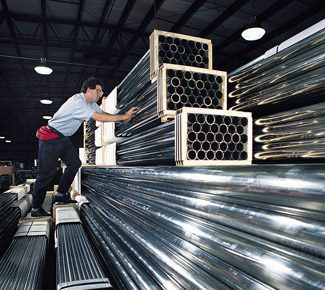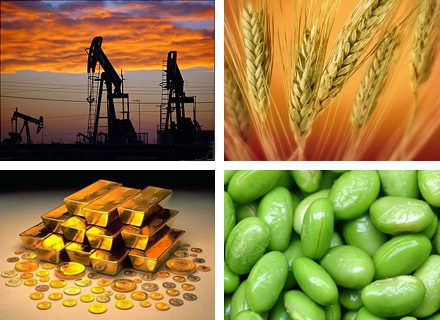Edited for posting by: munKNEE.com
The price per metric tonne of antimony has gone up 700% in the last decade and is expected to rise 5% annually to $20,000/tonne by 2020 at which time global reserves should run out. There is only one antimony mine in production in North America and the company is listed on the TSX.V
So says a paraphrased introduction to Visual Capitalist’s (www.visualcapitalist.com) latest informative infographic on Antimony presented here by www.munKNEE.com (Your Key to Making Money!). This paragraph must be included in any article re-posting to avoid copyright infringement.
Sign up HERE to receive munKNEE.com’s unique newsletter, Your Daily Intelligence Report
- FREE
- The “best of the best” financial, economic and investment articles to be found on the internet
- An “edited excerpts” format to provide brevity & clarity to ensure a fast & easy read
- Don’t waste time searching for articles worth reading. We do it for you!
- Sign up HERE and begin receiving your newsletter starting tomorrow
- You can also “follow the munKNEE” on twitter & Facebook
*http://www.visualcapitalist.com/portfolio/antimony-fireproof-and-supply-critical
Other Commodity-related Infographics:
1. China’s Demand for Iron Ore (Steel) Continues – Here are the Facts
Iron ore is now the world’s second largest commodity market after oil and is essential for developing nations to build infrastructure and to modernize accounting for 95% of all metal produced annually. [As I can personally attest to from my recent 29 day trip throughout mainland China, it is no surprise that] China’s rapid industrialization in the last decade…is responsible for all the growth in steel consumption since 2000…placing a huge strain on the global iron supply and pushing iron exploration into untapped regions of the world. Although the price of iron price rose steadily until peaking in 2011 (it has softened as of late), the long-term outlook is strong. Learn more in this informative infographic.
2. The Poor Man’s Gold is Silver; the Poor Man’s Diamond is…
You probably picture a diamond when you think of a white gemstone. Although diamonds are beautiful and traditional, you may want to consider a less expensive alternative. Check out the infographic below which tells you all about the various alternatives complete with the pros and cons of each.
3. Nickel: Demand Strong, Supply Diversified & Prices Stable
While best known for its use in the five cent coin, nickel has far more strategic uses. Nickel can be alloyed with other metals to create truly extraordinary materials – such as stainless steel which now accounts for more than half of all nickel consumed. China’s stainless steel consumption has increased 1625% in the last 10 years and is now the largest demand driver for nickel worldwide accounting for 40% of global totals. There’s still a lot more room for growth in the industry and nickel’s diversified supply is expected to keep prices stable, so the savvy investor should look for low cost nickel projects in safe jurisdictions. Check out the infographic below for more insights.
4. Why Copper Prices Have Increased So Dramatically Over the Last 10 Years
In this infographic we explore why copper prices have increased by 4x over the course of 10 years.
5. Copper: The Nervous System of Our Society – Here’s Why
Copper is one of the most widely used metals on the planet, and has been for more than 10,000 years. Today, it’s the nervous system of our society – of our cities, homes, tools and toys. The simple truth is that the western lifestyle is completely dependent on copper. Here’s why as depicted in the infographic below.
6. Manganese Oxide & Electric Vehicles: The Next Great Power Couple
Manganese is the 4th most traded metal in the world, mainly because it is indispensable in the production in steel and other alloys. The fastest growing sector, however, is in the use of manganese oxides for use in batteries and particularly rechargeable lithium ion (lithiated manganese dioxide or LMD) batteries. LMD batteries are ideal for applications that require high levels of power all at once such as power tools and now electic and hybrid vehicles. Take a look at the infographic presented here to learn about the important role manganese will play in our future.
7. Graphite: The Driving Force Behind Green Technology
Global consumption of natural graphite has doubled in the last 10 years and will increase even more so in the next decade due to a) the continuing modernization of China, India and other emerging economies given the strong demand from traditional end uses such as the steel and automotive industries and b) the advent of new applications for graphite such as lithium-ion batteries, fuel cells, and nuclear and solar power. As a result of such increased demand prices for large flake, high purity graphite (+80 mesh, 94-97%C) have more than doubled making the mining of such a minerals increasingly profitable. Learn even more by viewing the infographic below.
8. It’s Time to Replace the Refrain “Got Gold?” With “How Much Graphite Stock Do You Own?”
Demand for lithium-ion (li-ion) batteries over the next 8 years – for use in electric and hybrid cars, smart power grids and mobile consumer devices – is going parabolic. Sales of electic/hybrid cars, for example, will be increasing 5-fold to 4,000,000 over that timeframe and every such car will have 30-110kg of graphite in their batteries, depending on the car, that can not be replaced economically. Forget the common refrain “Got gold?” A more appropriate refrain should be “How much graphite stock do you own?” Learn more about graphite in the infographic below.
9. Graphene Could Have a DRAMATIC Impact on Our Future – Here’s Why
Tens of billions of dollars per year are being spent worldwide on graphene research. Why? Because graphene could have a dramatic impact on our future by changing the fields of computing, energy, materials and optics. How? By making everything smaller, stronger and more ecologically sustainable. Below is an infographic that provides all the details.
1o. Vanadium: An Infrastructure Essential With Major Potential Use in Energy Storage and Green Energy
This infographic looks at the primary uses for vanadium, its supply and demand, and future applications that could potentially affect the metal’s demand.
11. Tungsten Supply Risk Could Have Negative Impact on Cost of Living – Here’s Why
Tungsten is unique in its extremes. It’s extremely hard, heat resistant, dense, and environmentally benign. It’s used to make cemented carbide, one of the strongest and most durable compounds. That’s the positives. but, unfortunately there are negatives too. Take a look at the infographic below for more information.
12. Mining of Heavy Rare Earth Elements (HREE) in Canada by 2017 Offer Major Investment Opportunity
95-97% of the supply of Rare Earth Elements (REE) – integral to the high-technology, nanotechnology, hybrid automotive, aerospace and defence industries – currently comes from China. China has continued to reduce its export quotas to the point where it will only be supplying 50% of the world’s needs by 2015. This will have a major impact on prices for each of the 17 Light (LREE) and Heavy (HREE) elements that comprise the category – and the products in which they are used – unless alternate sources of supply are found. A Canadian company has done just that and will be bringing one of the largest HREE resources in the world (44% HREE, 56% LREE) into production by 2017. Below is an infographic on the REE market and a link to a Proactive One 2One Investor Forum presentation I attended on REE market fundamentals and the development and prospects of Quest Rare Minerals Ltd. and their Strange Lake project.
13. China & India to Drive Diamond Demand this Decade to New Heights – Here’s Why
China and India are about to drive diamond demand through newly affluent population. In the world diamond retail market, Asia in 2005 made up 23% of purchases. In 2020, they will make up 57%! Such growth in diamond demand should make for a sparkling future for those who invest prudently. In the infographic and copy below you will learn all about diamonds.
14. This Interactive Table of Commodity Returns Is Easy to Use – Try It
Natural resources are the building blocks of the world, essential to progress and prosperity. These commodities, like all investments, can have wide price fluctuations over time. The interactive table provided shows the ebb and flow of commodity prices over the past decade and illustrates the principle of mean reversion—the concept that returns eventually move back towards their mean or average. [Take a look.]
 munKNEE.com Your Key to Making Money
munKNEE.com Your Key to Making Money












